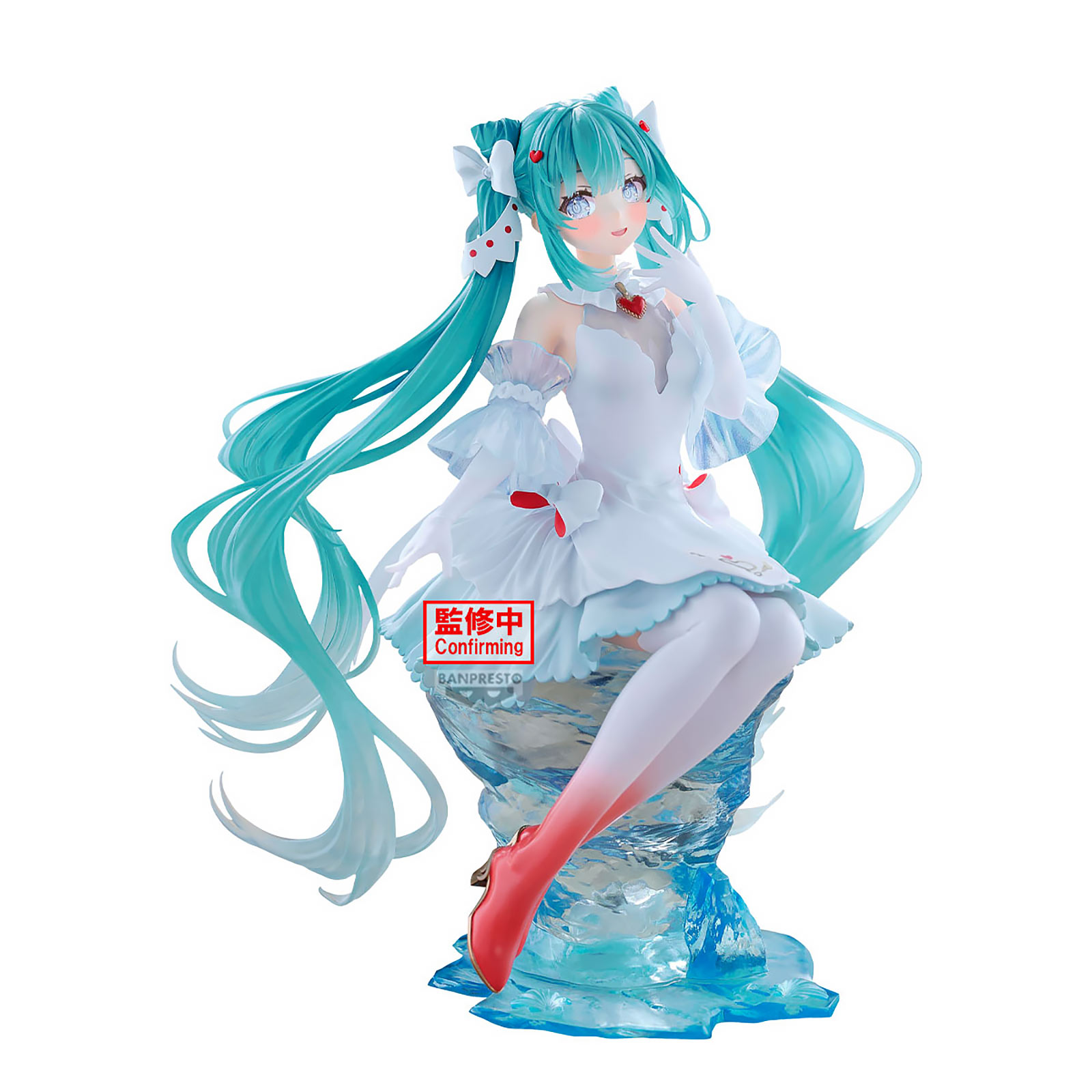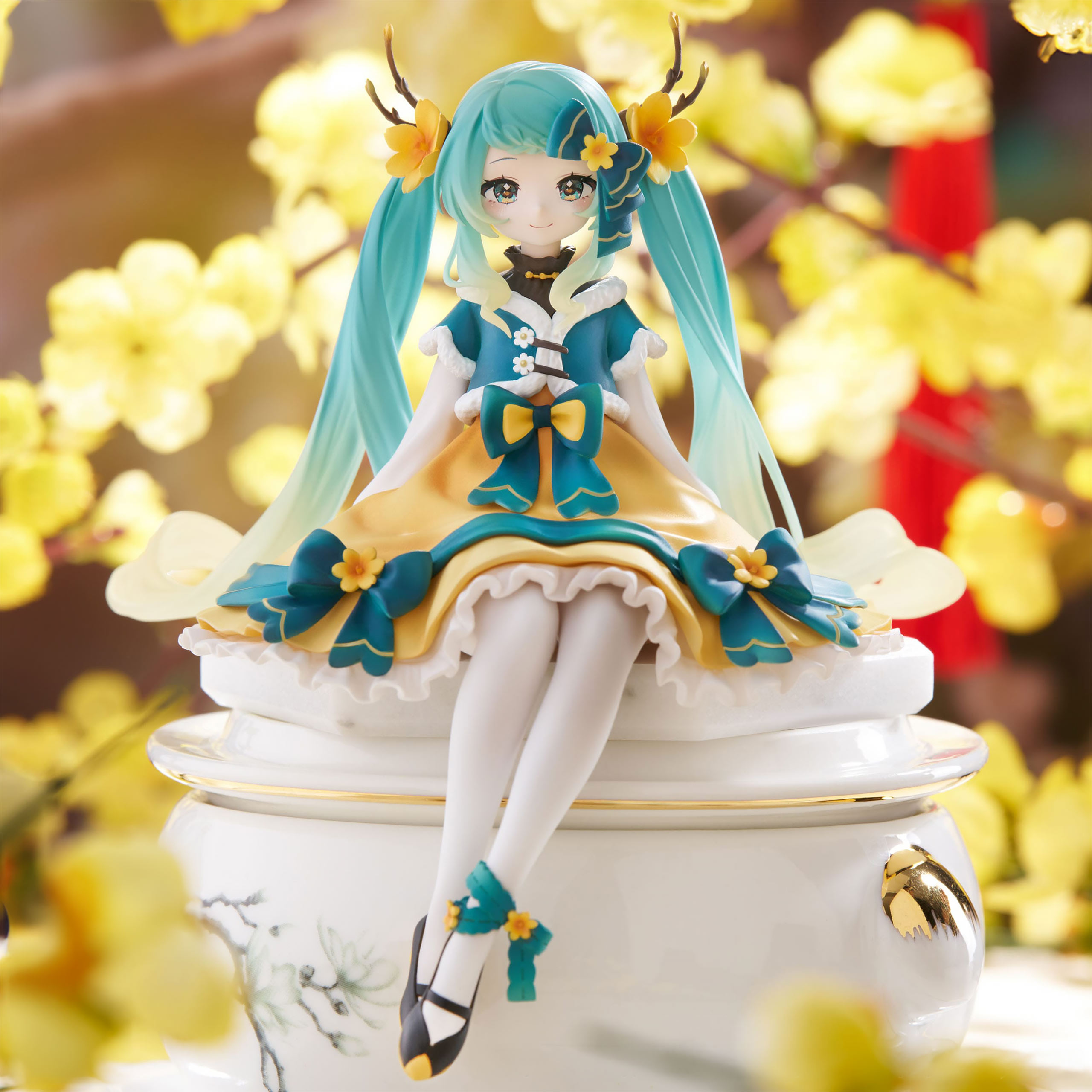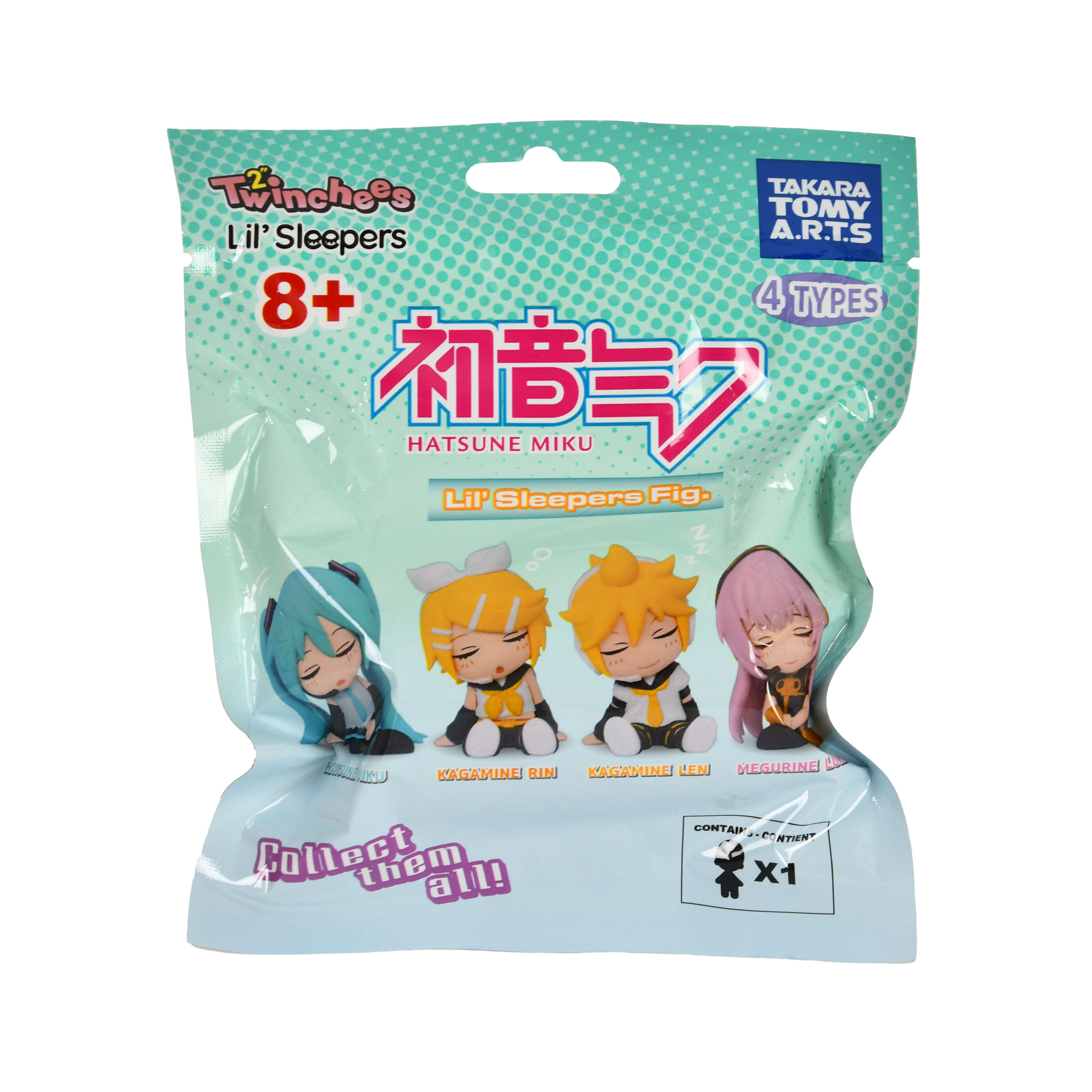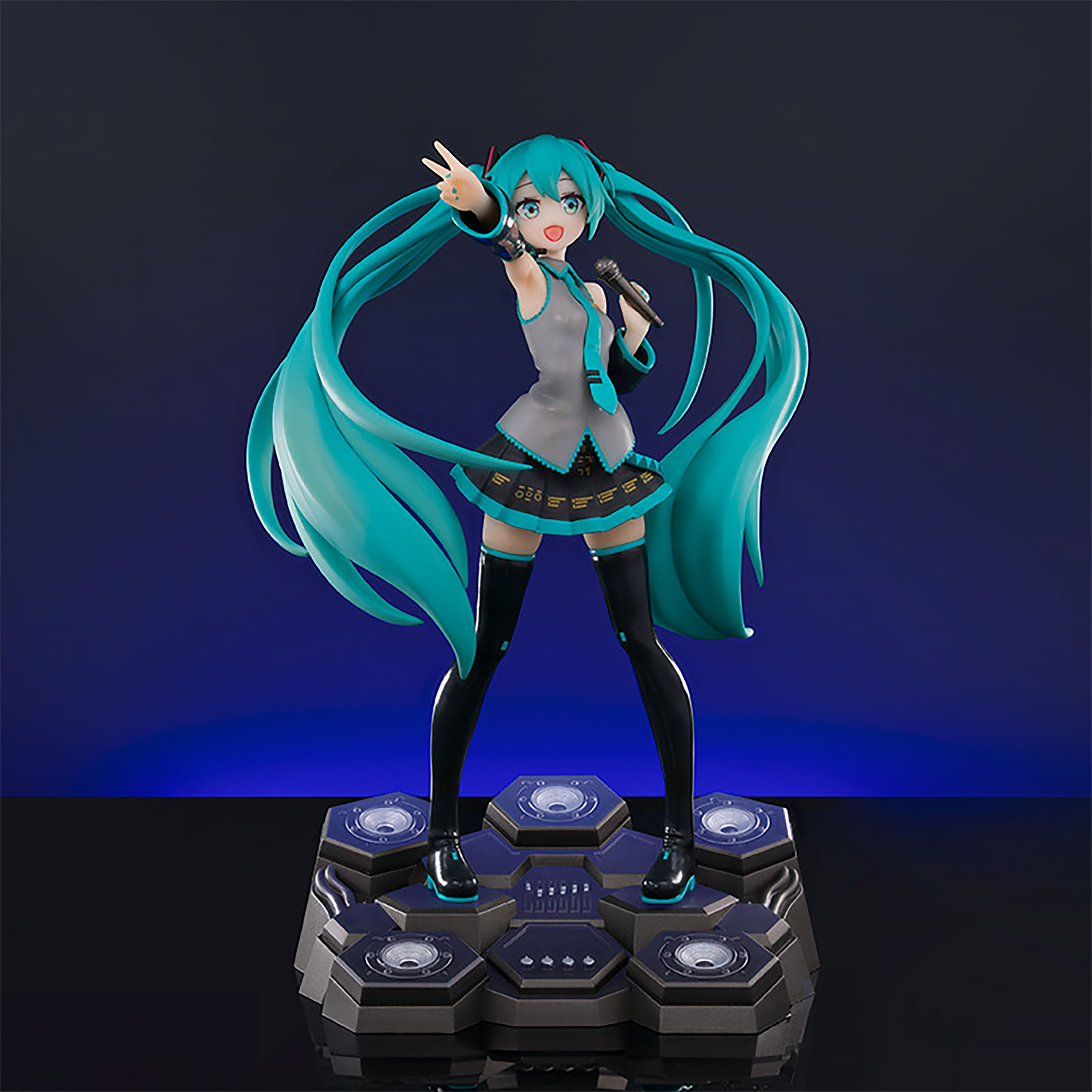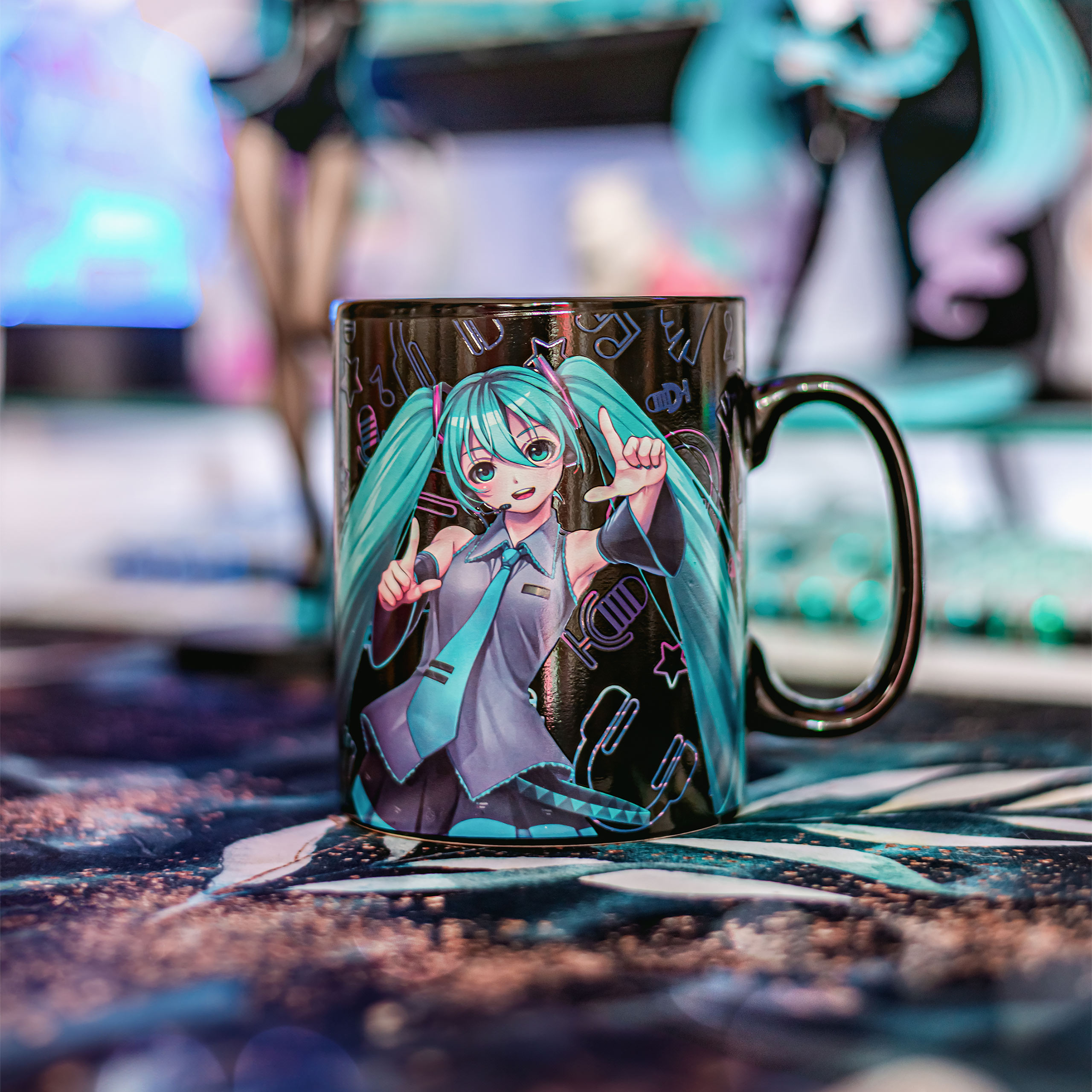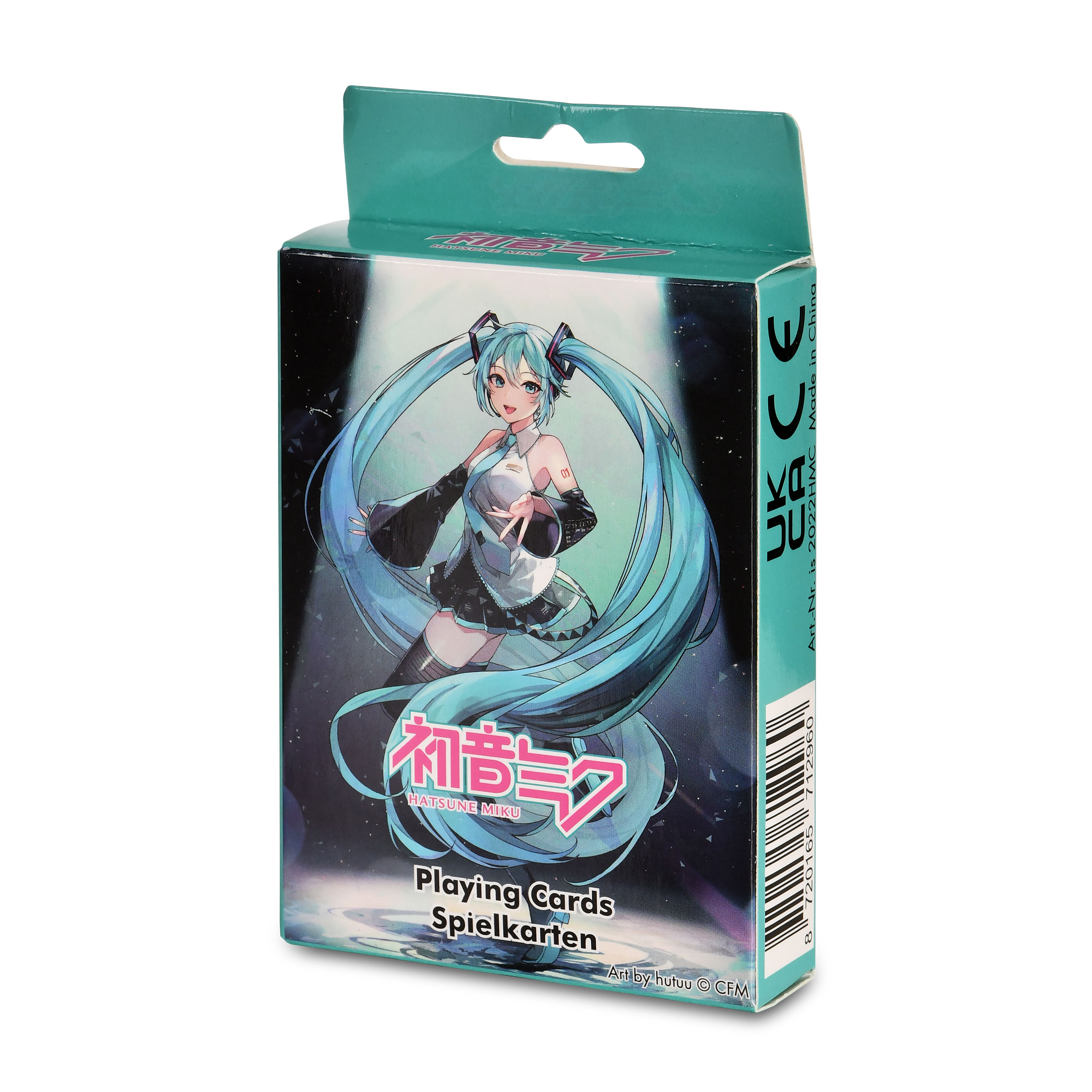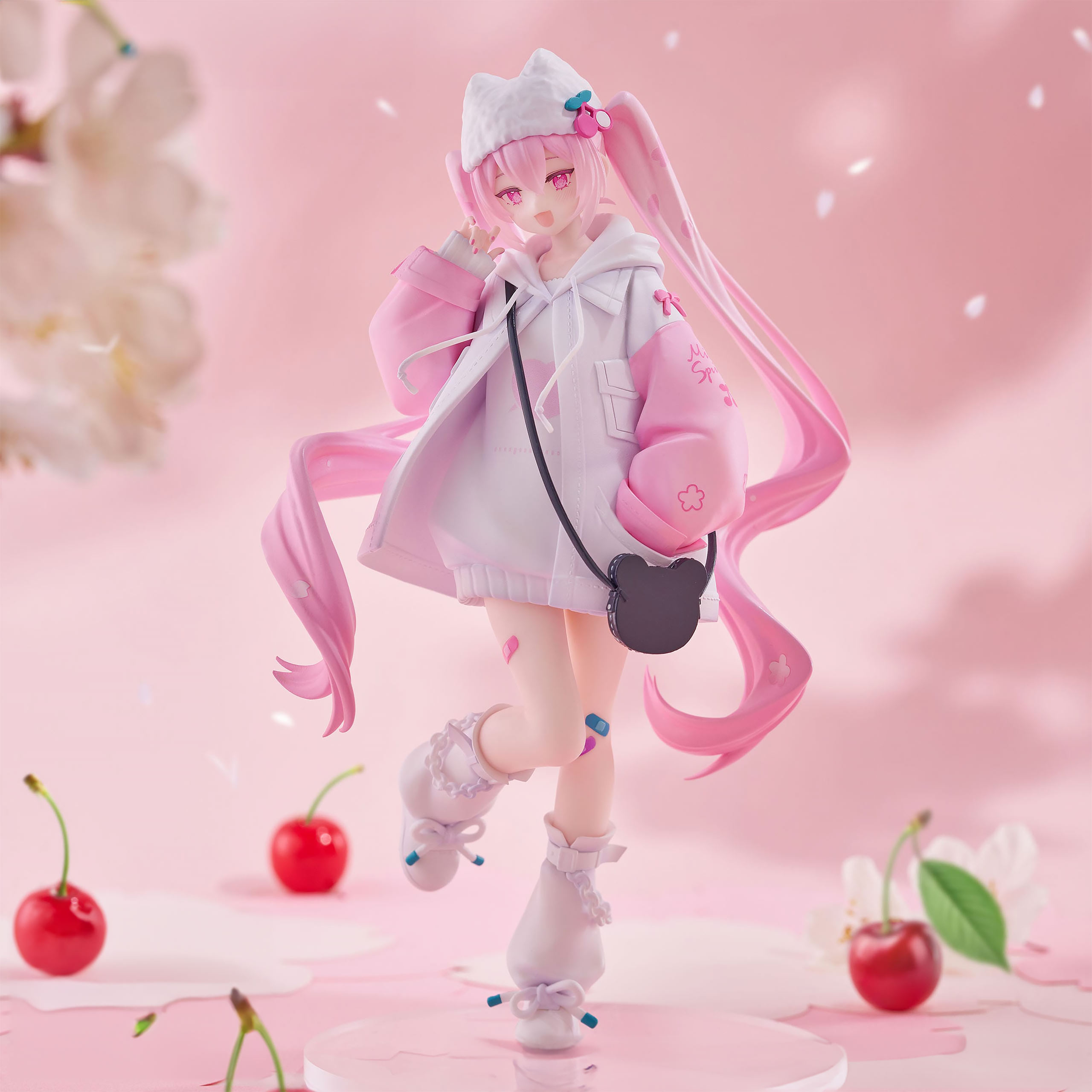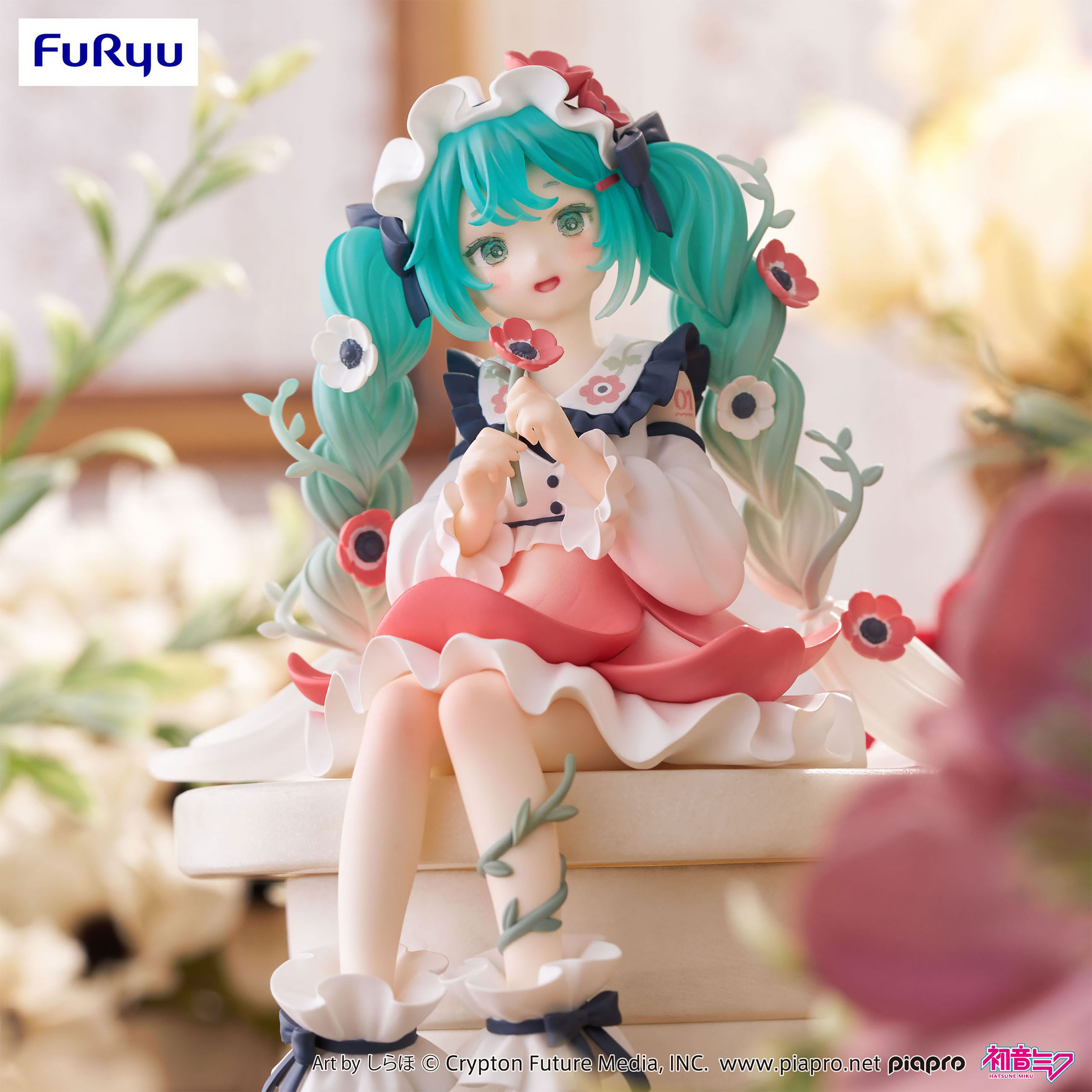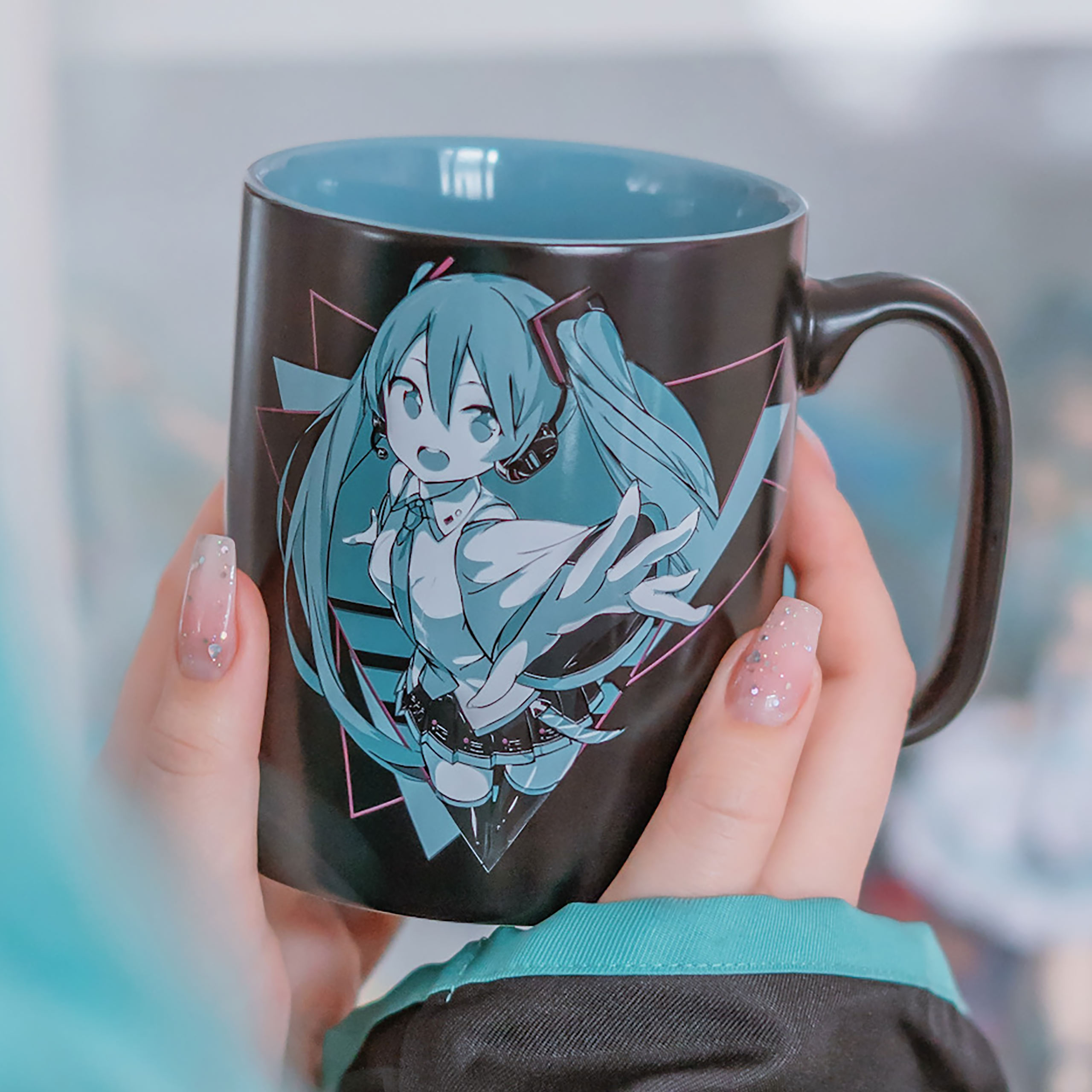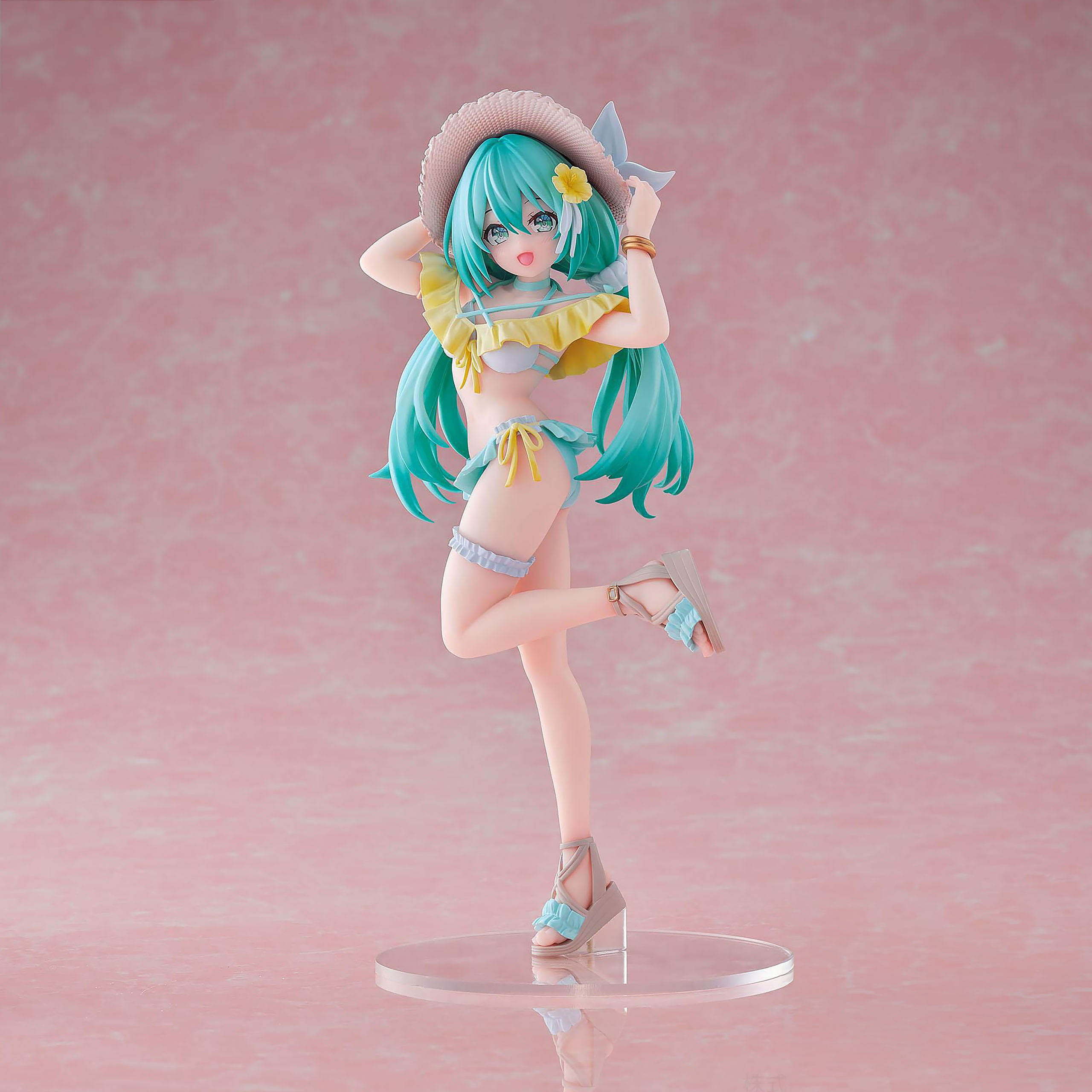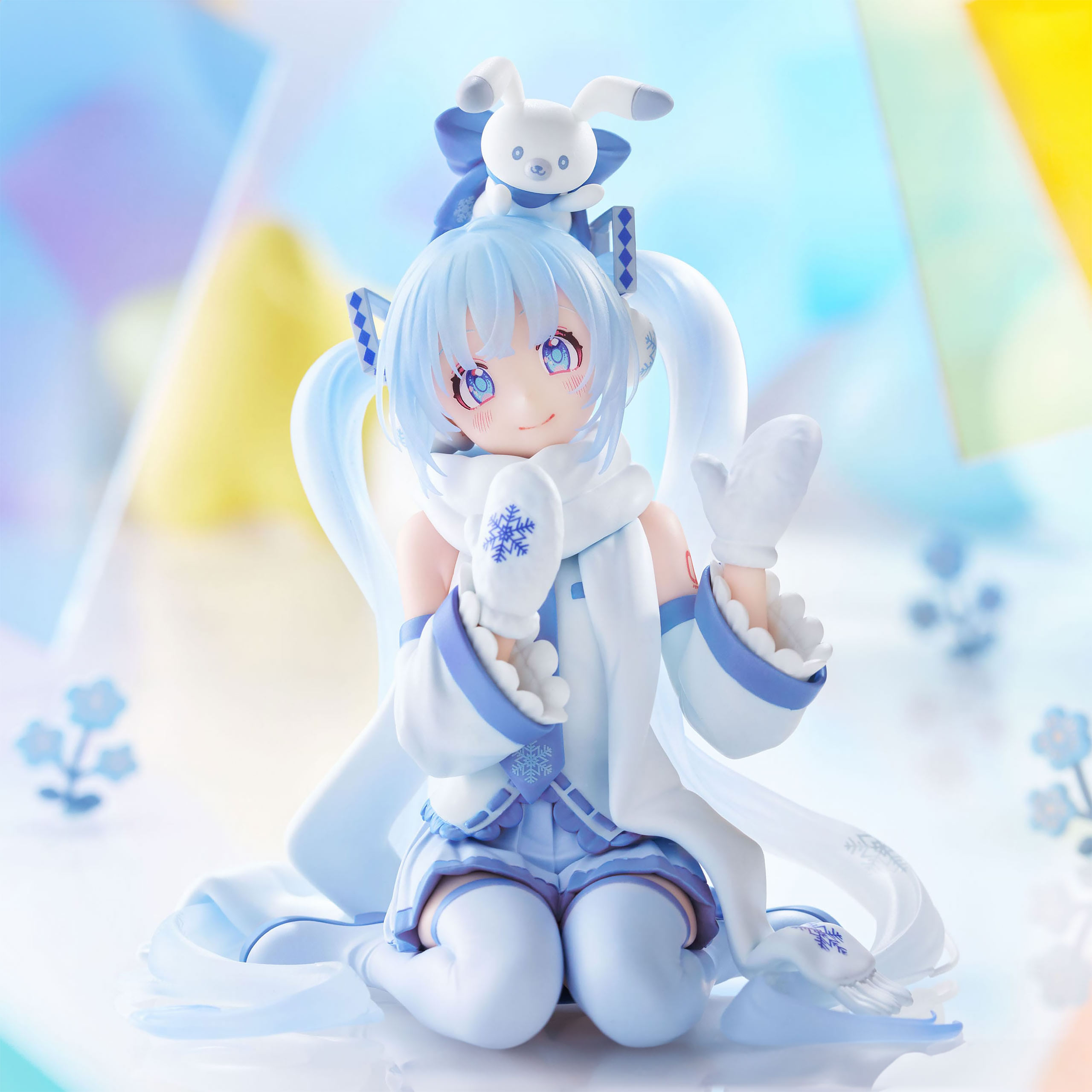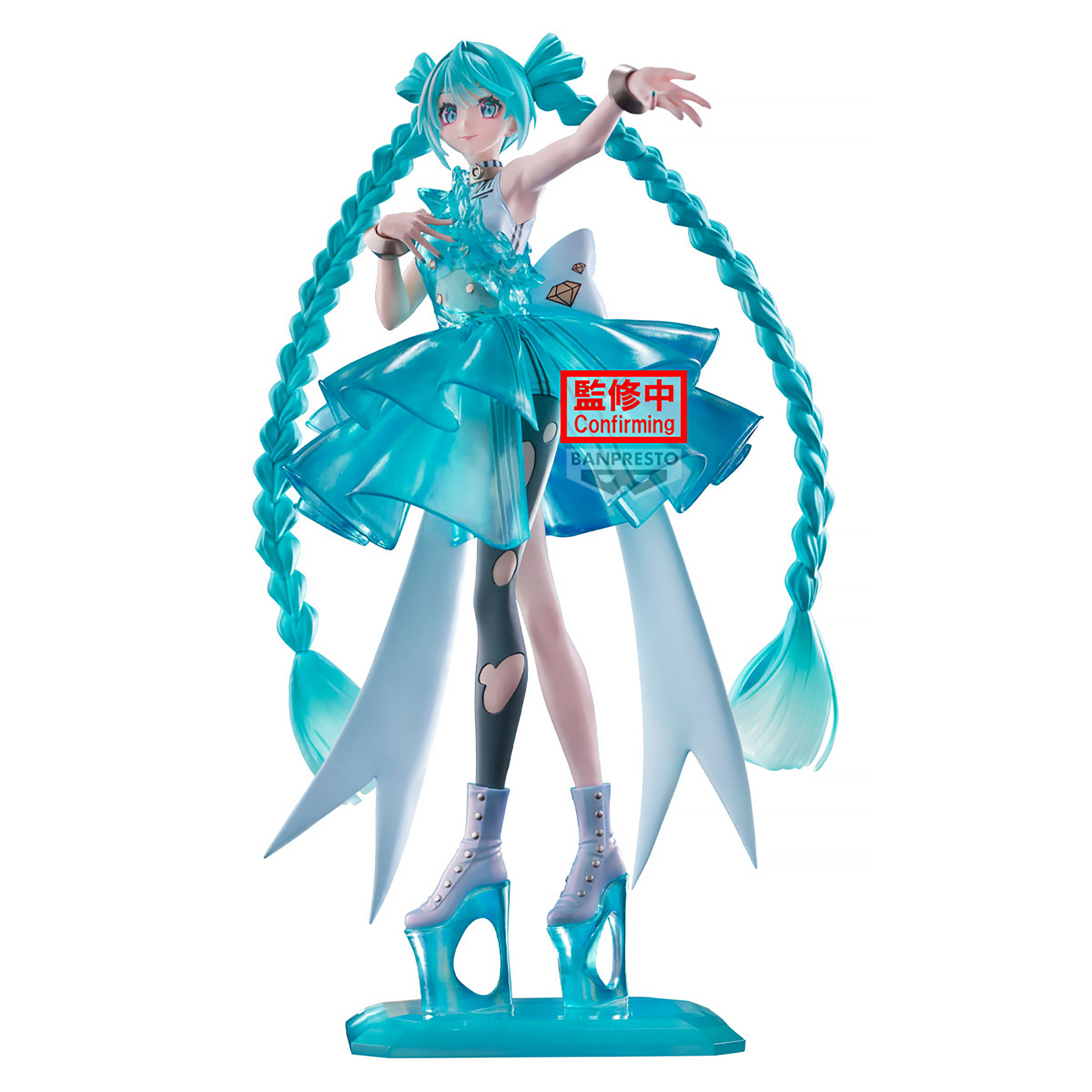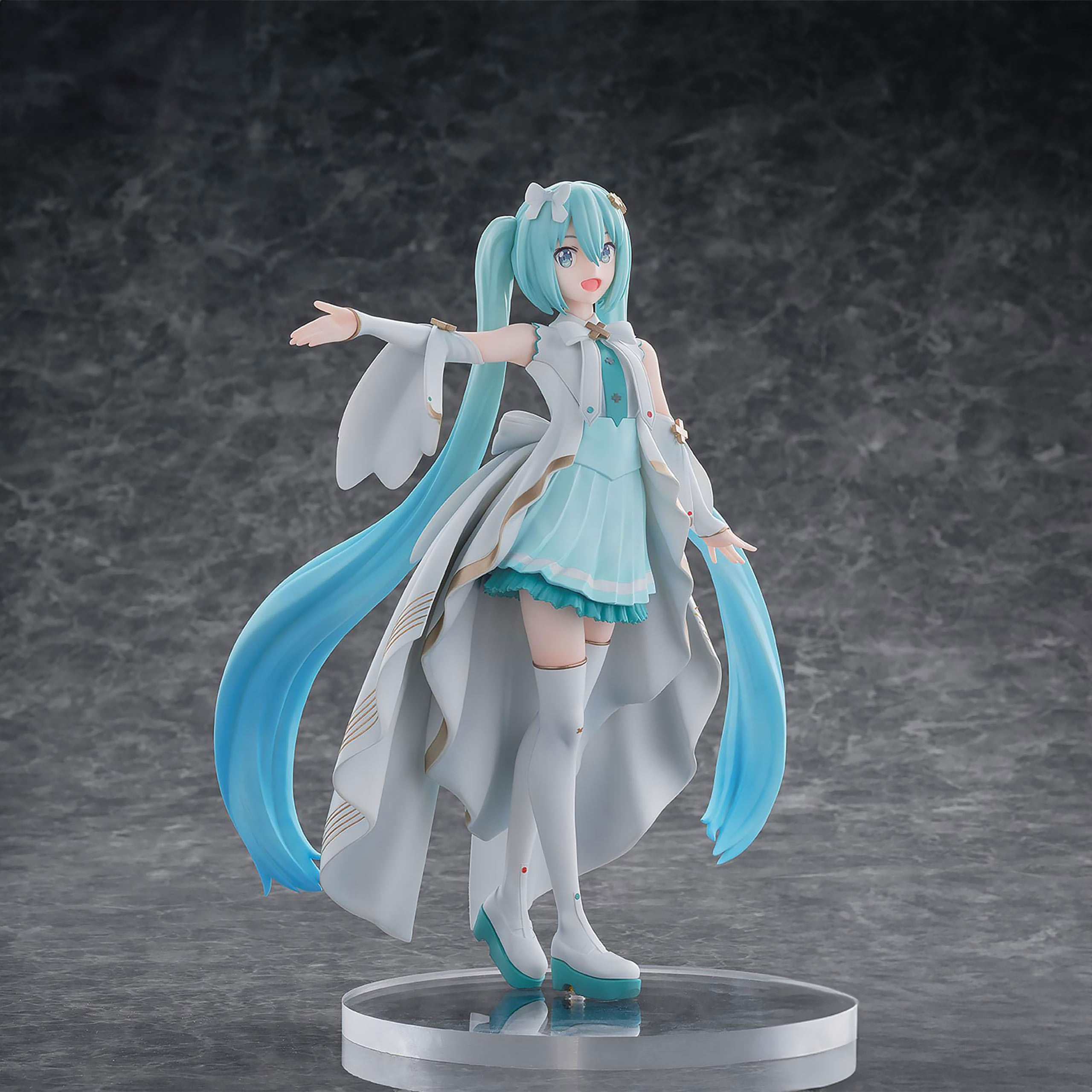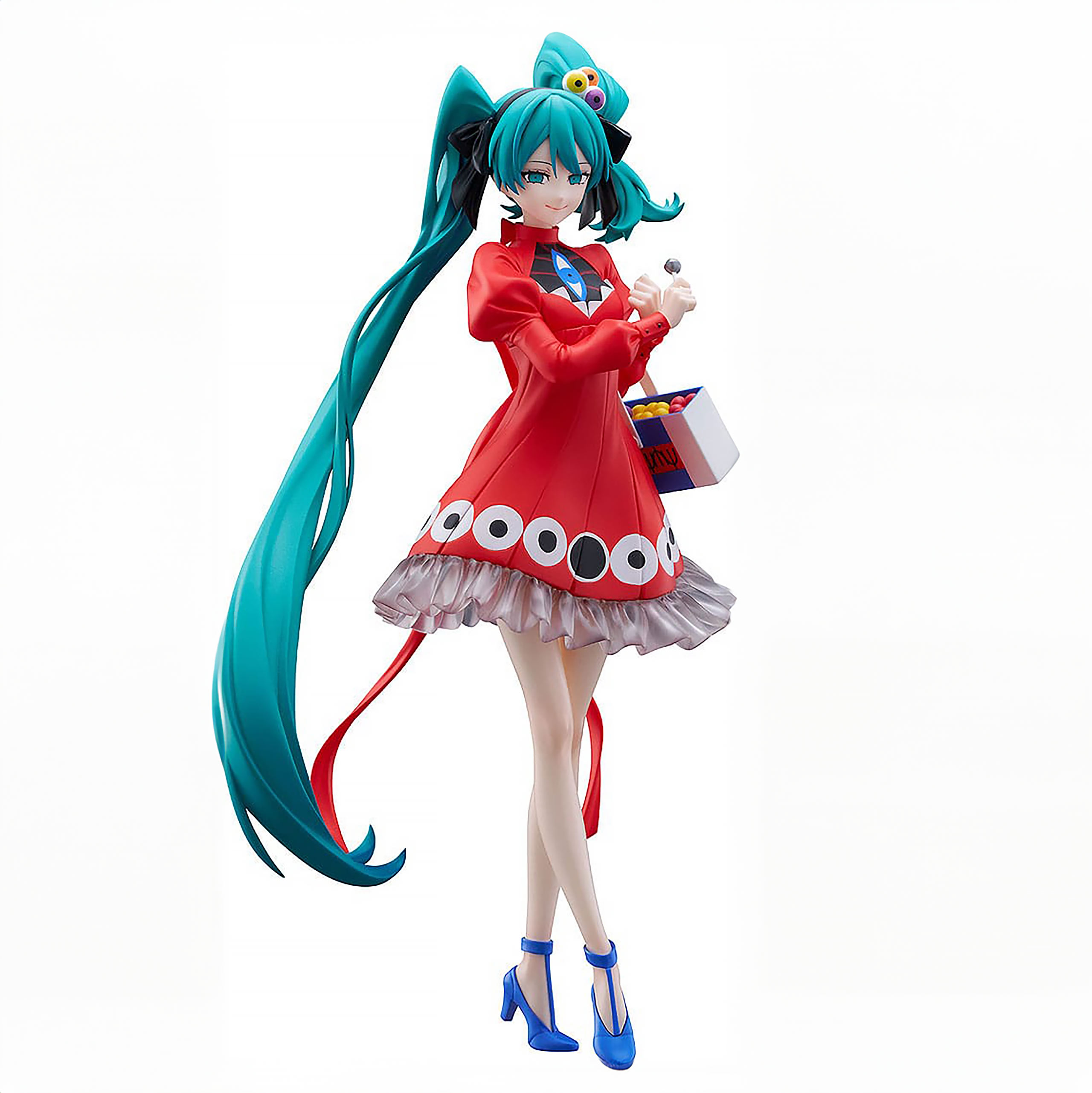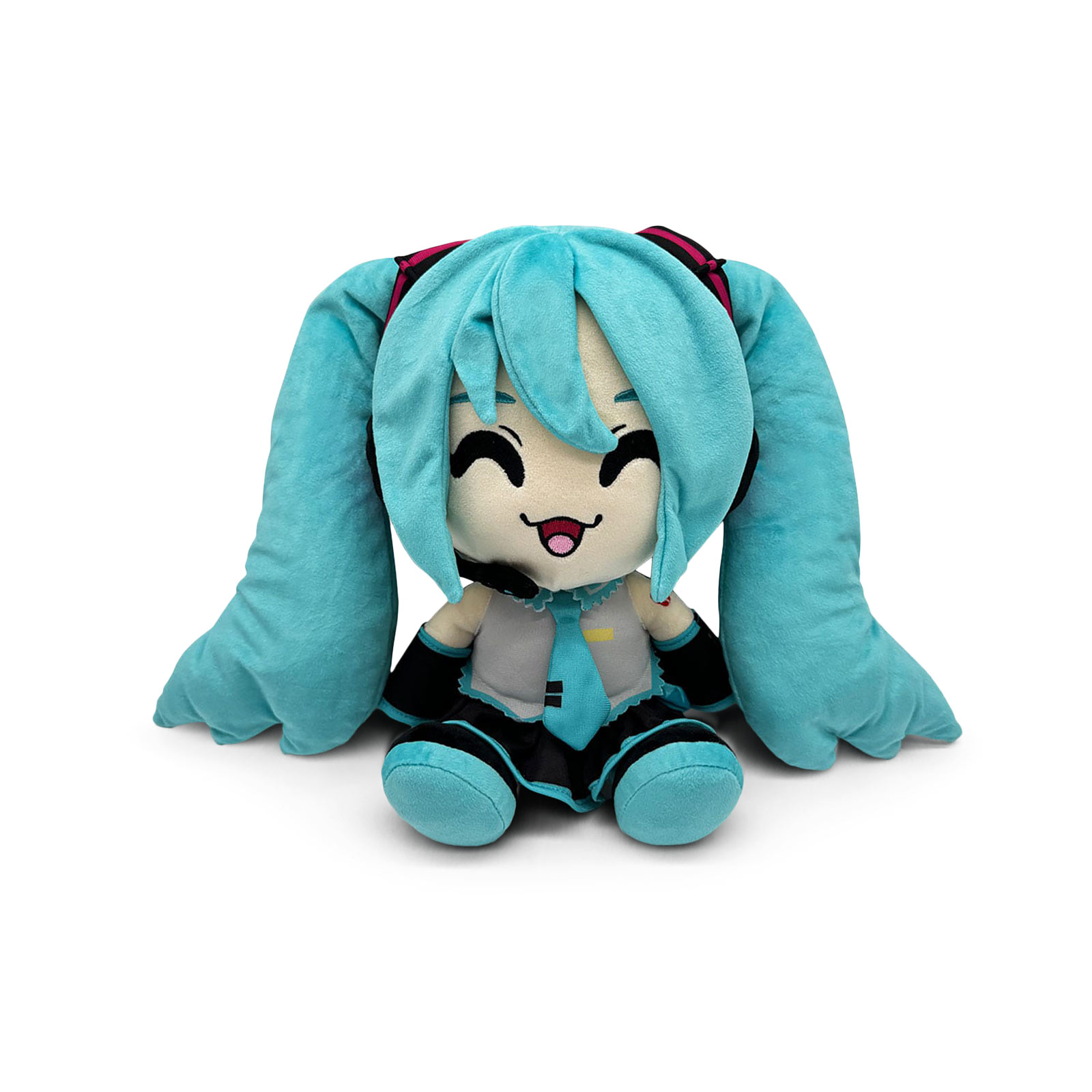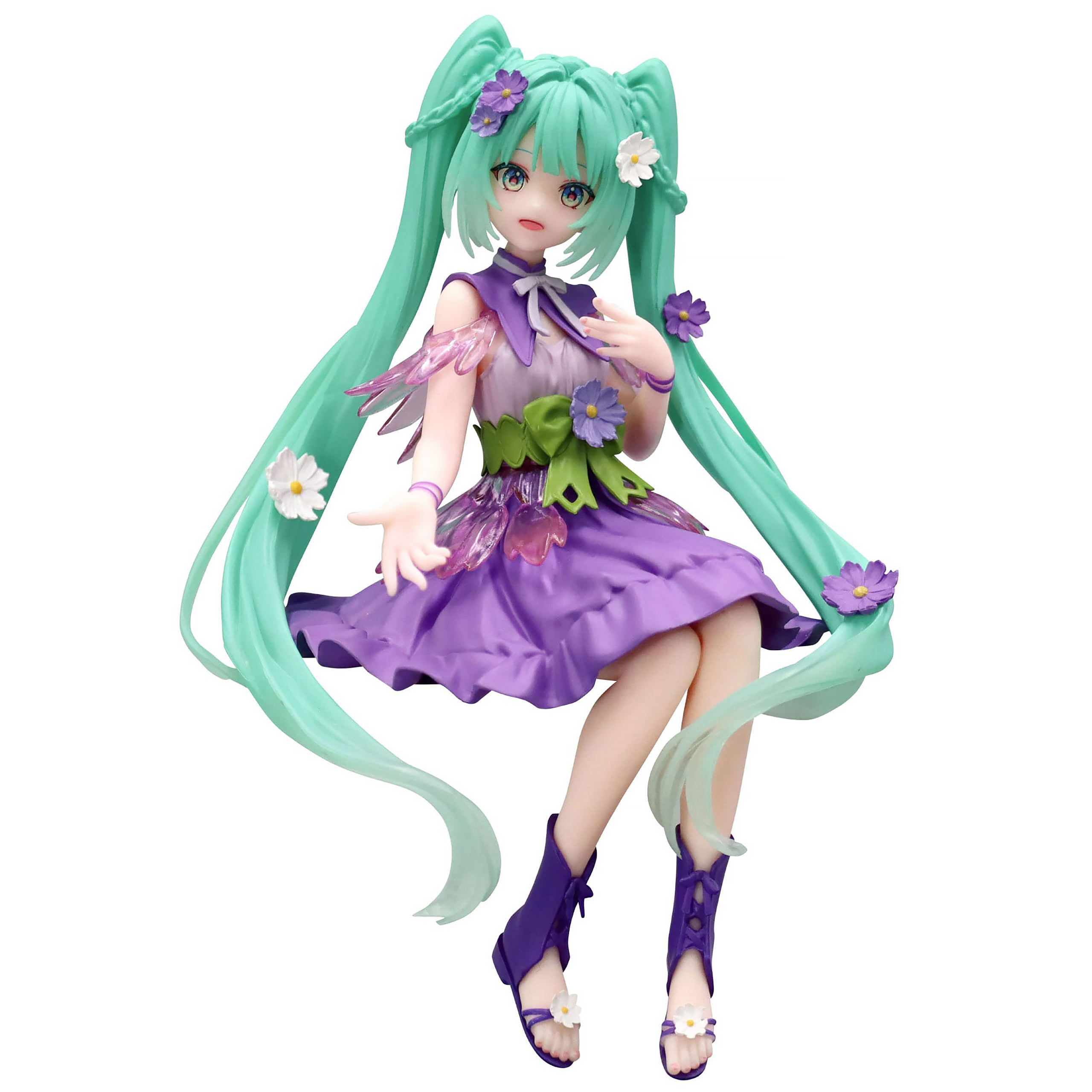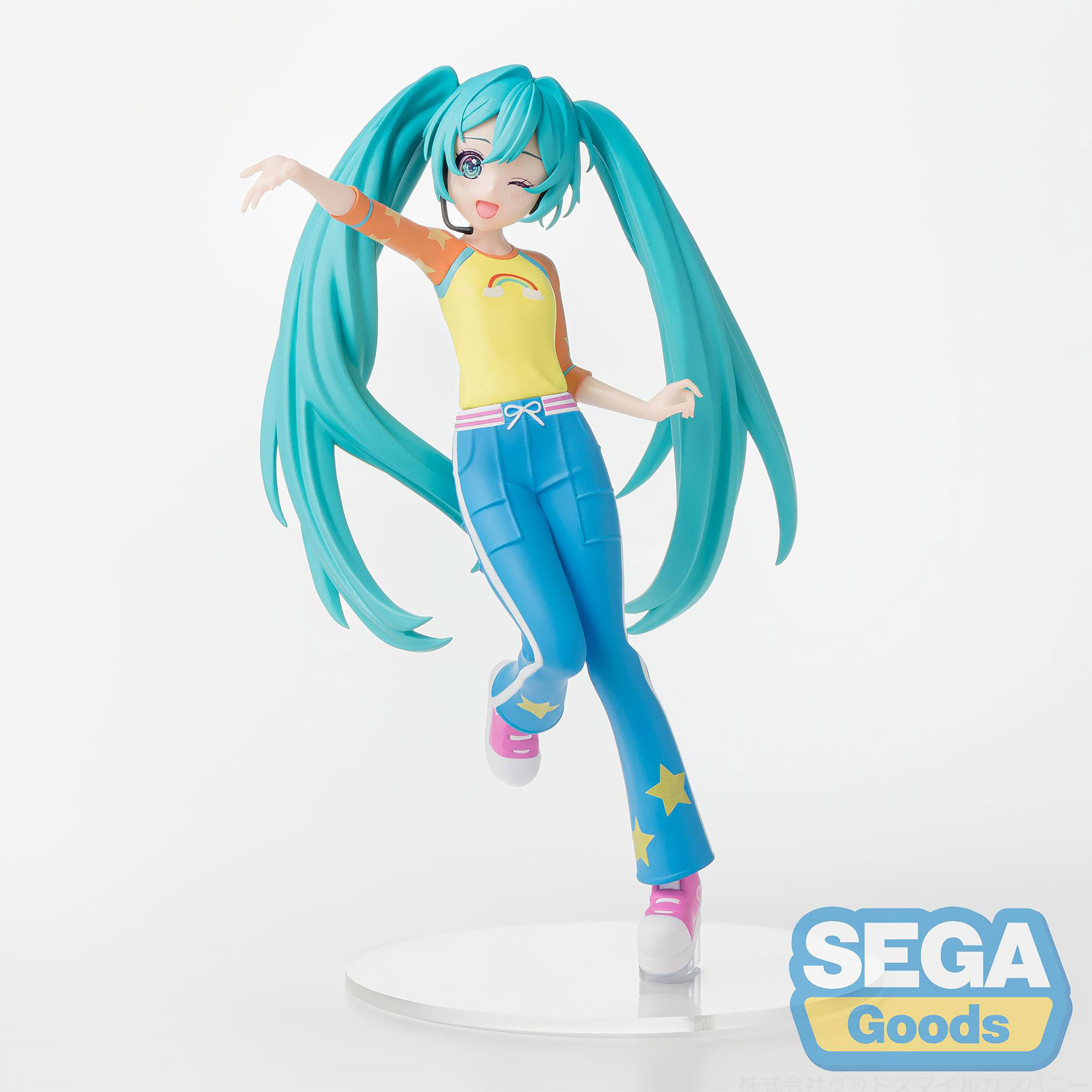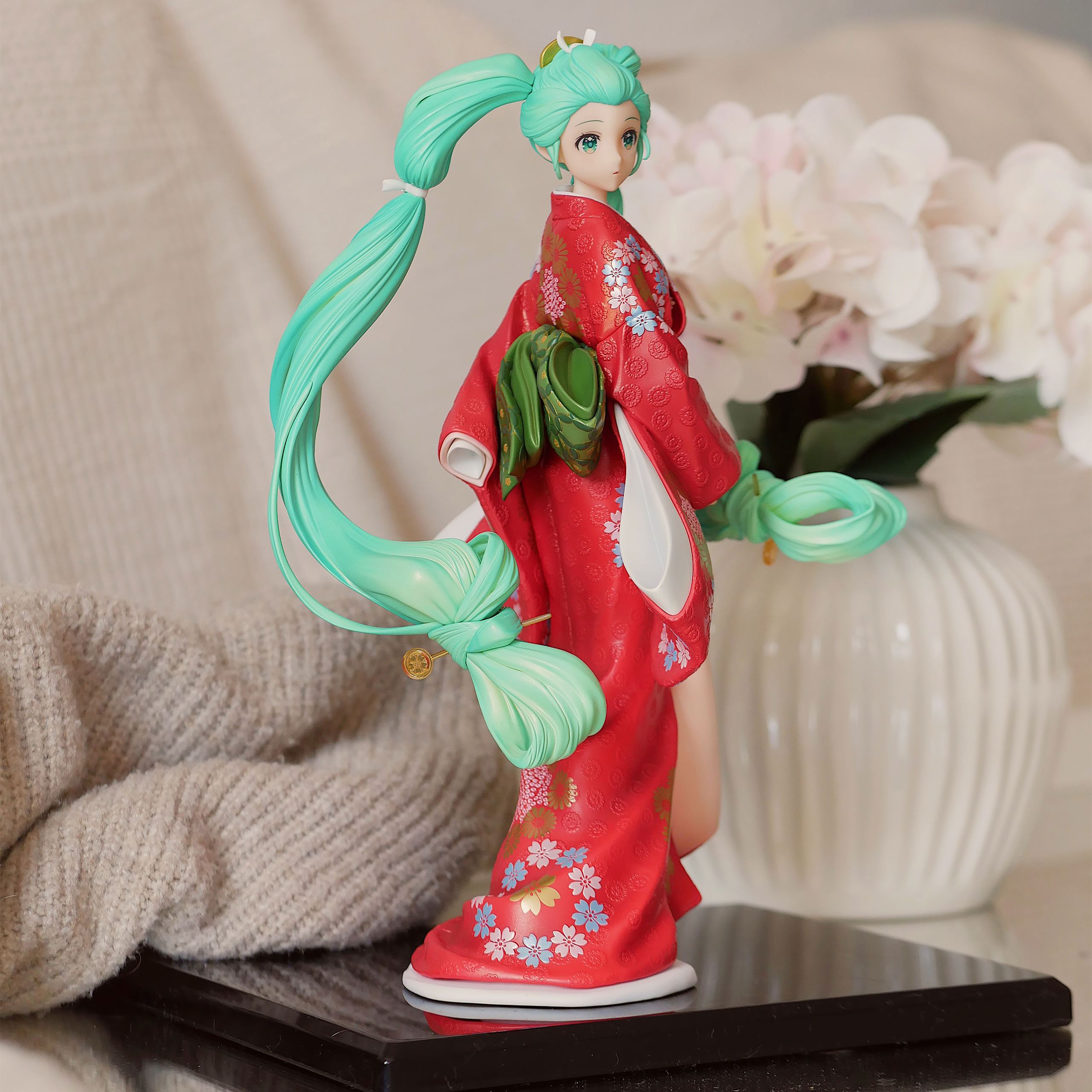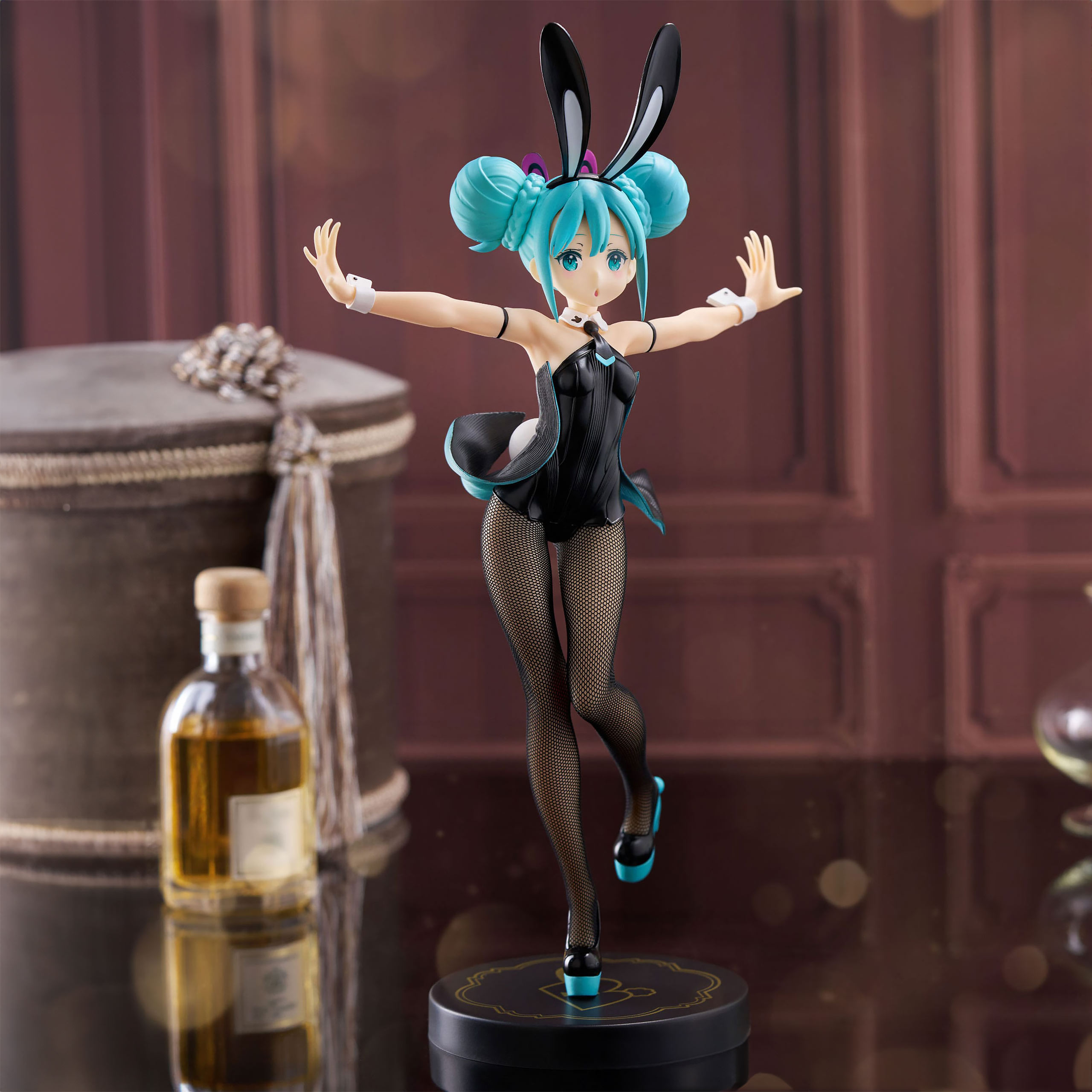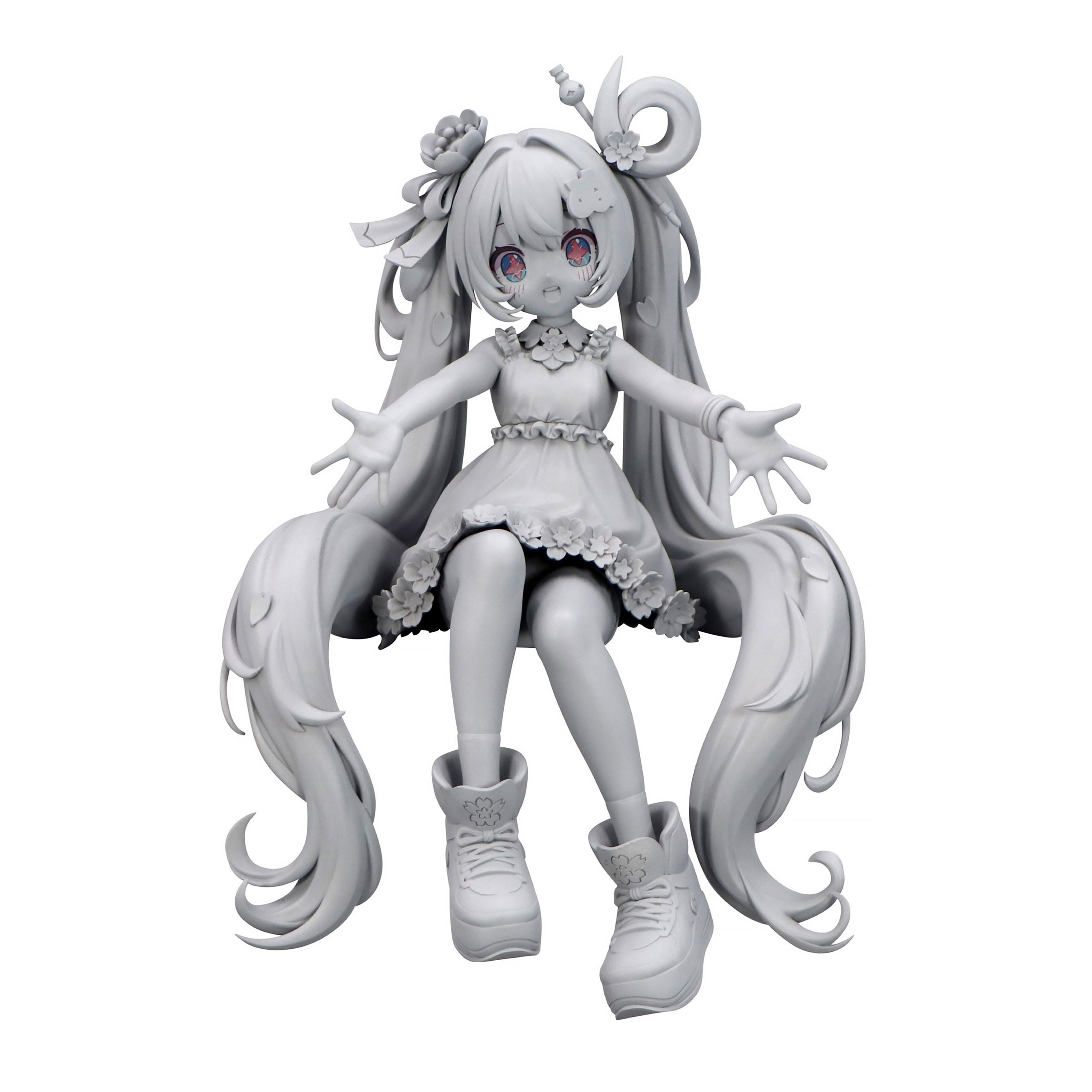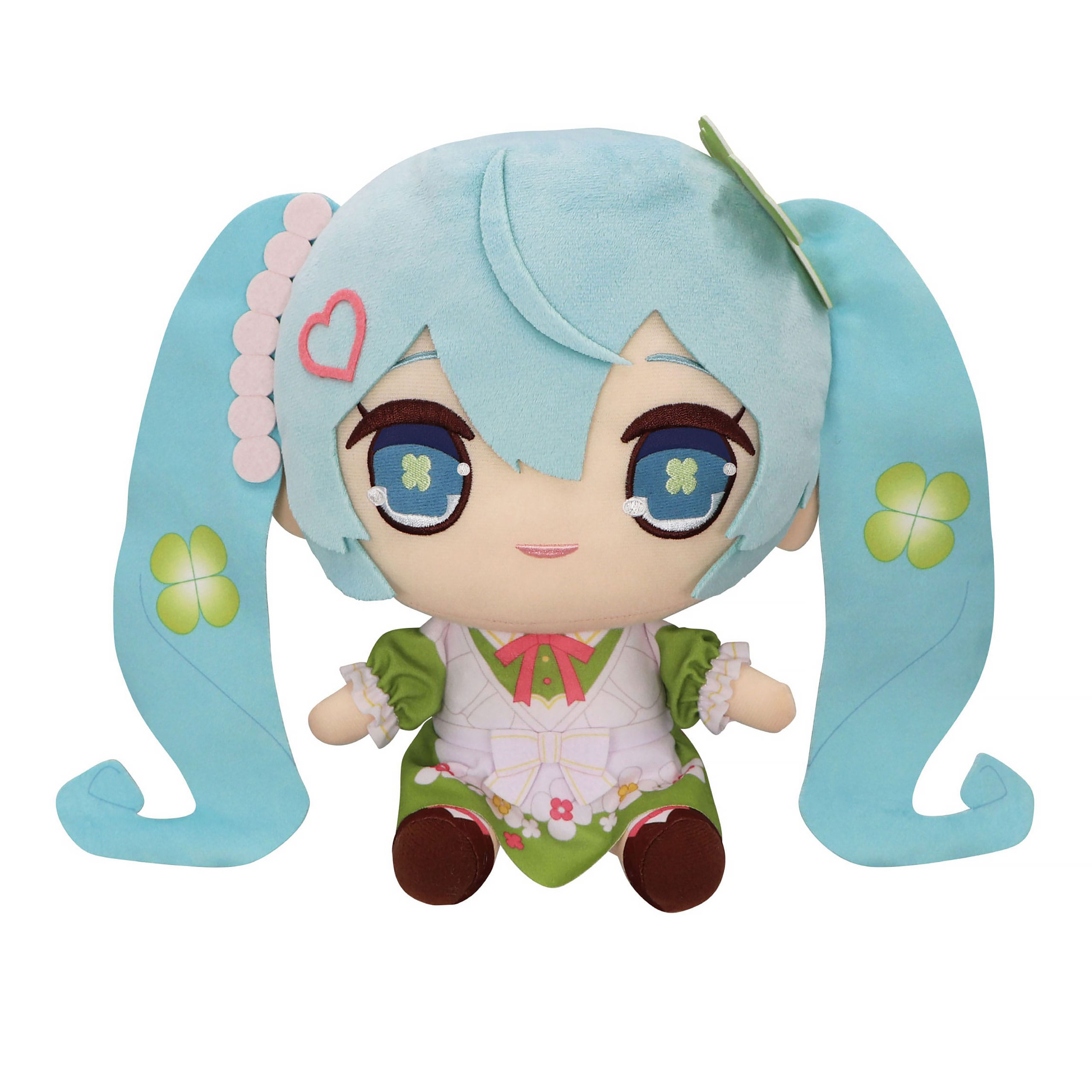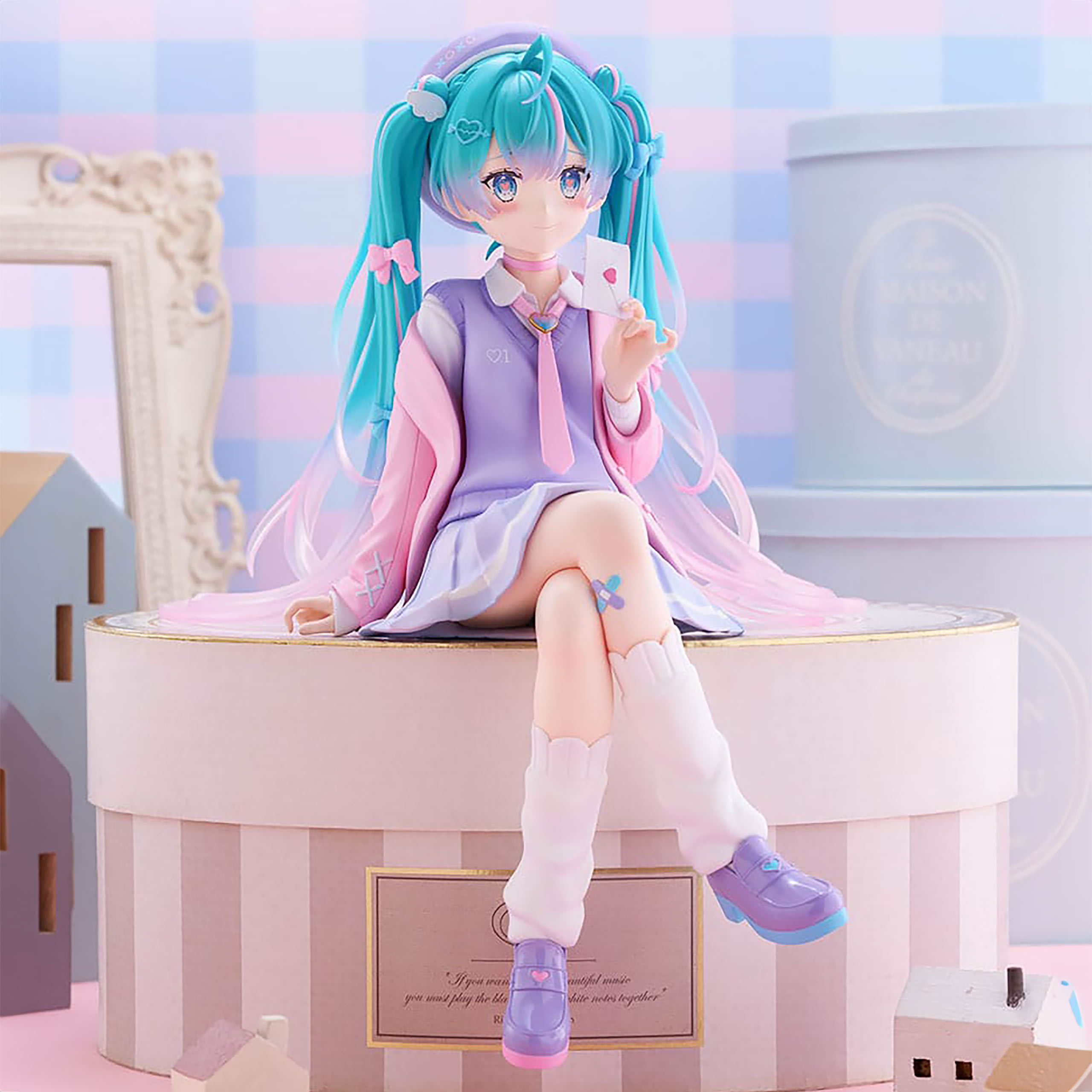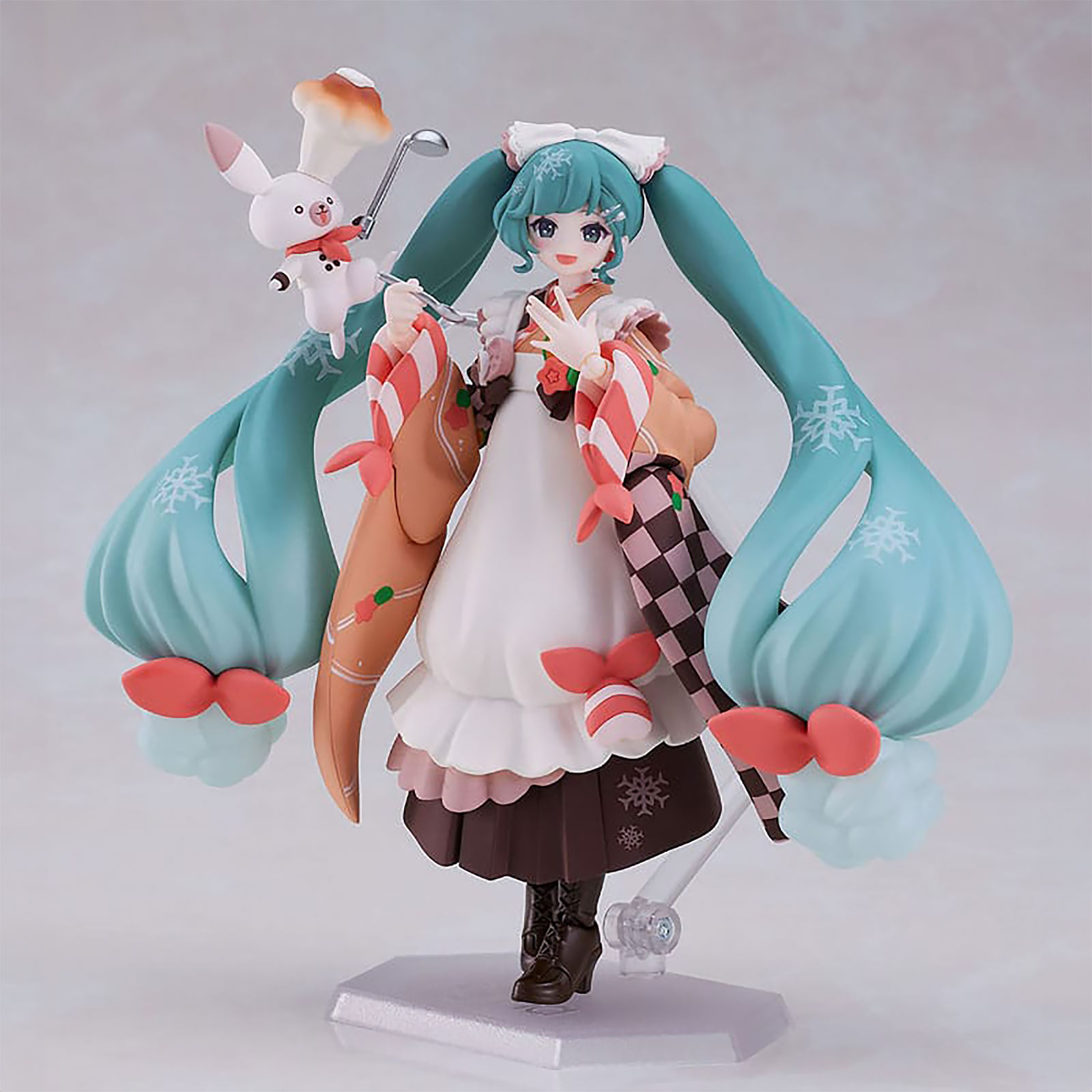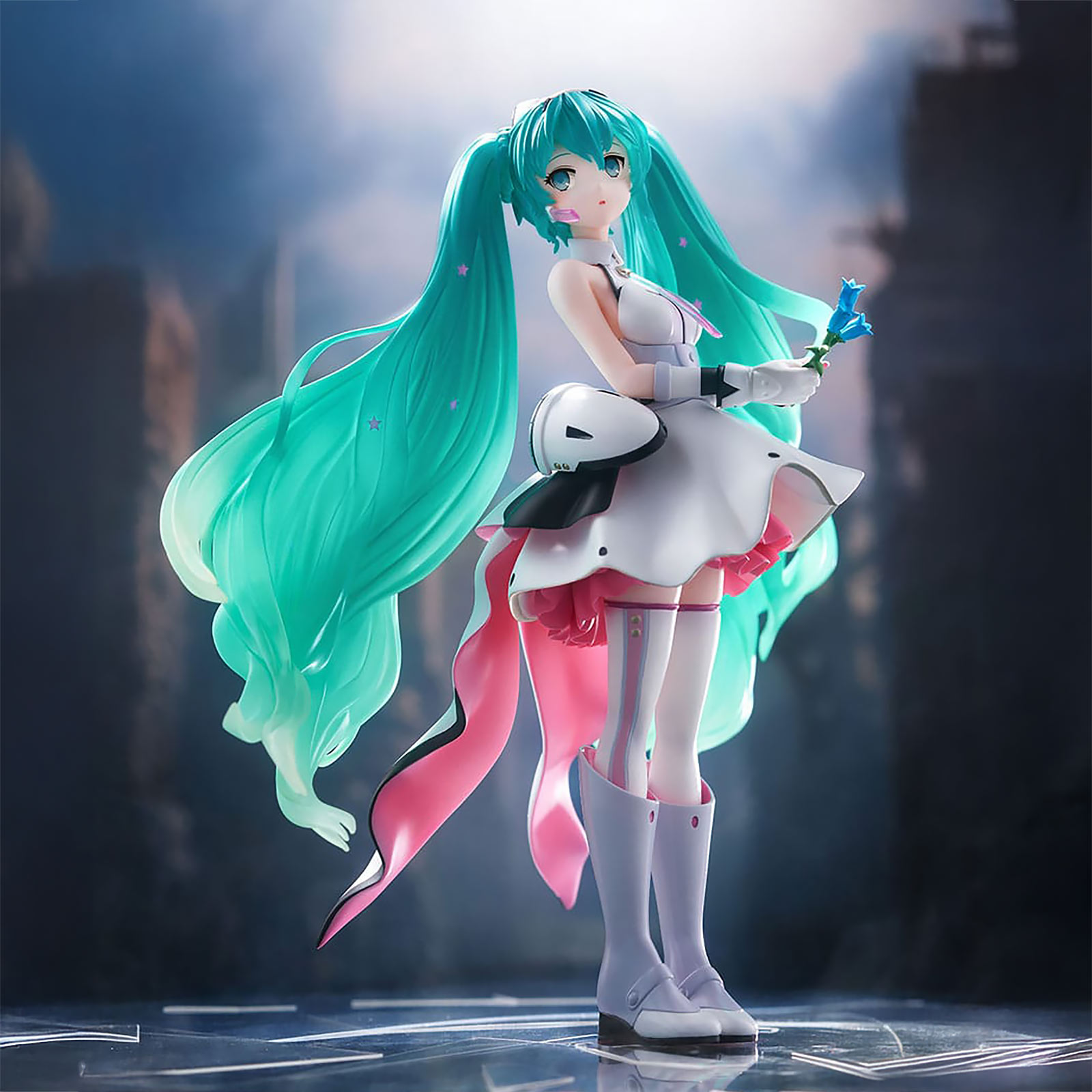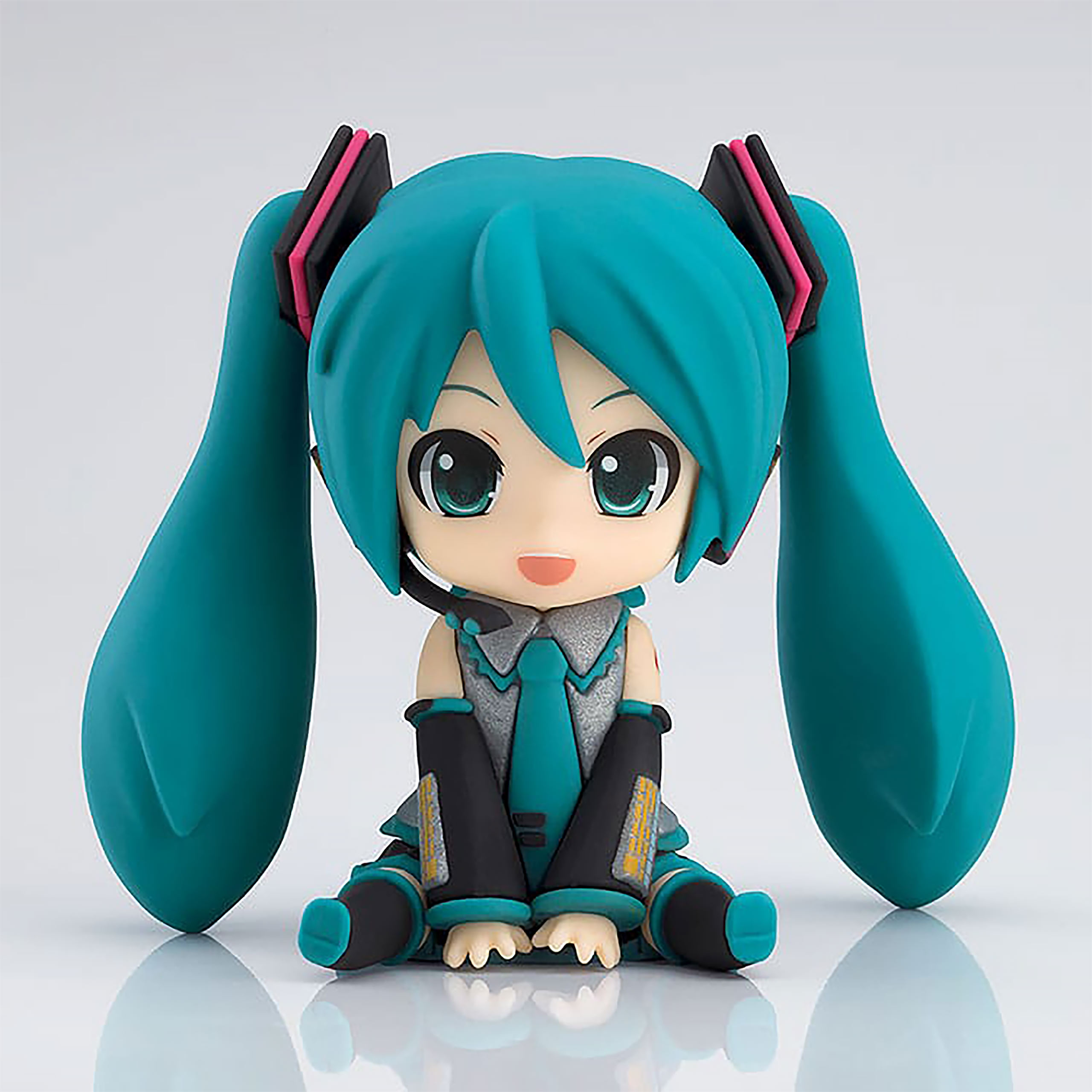Hatsune Miku
Miku, Miku, you can call me Miku. Blue hair, blue tie, hiding in your wi-fi.
Open secrets, anyone can find me. Hear your music running through my mind.
The number 01
Hatsune Miku has a tattoo of "01" on her upper arm. Which is why it is often assumed that Hatsune Miku is the very first virtual singer, also called a vocaloid. But that's not true. In fact, in the first Vocaloid software, there were already five other singers (Leon, Lola, Miriam, Meiko and Kaito) developed by Yamaha. And even in the technical successor Vocaloid 2, Hatsune Miku was not the first available voice, but Sweet Ann. Hatsune Miku is therefore the seventh Vocaloid singer. So what does the tattoo mean? Quite simply, she is the first member of the Character Vocal Series produced by Crypton Future Media; the number corresponds to her codename CV01. (You can read more about all this at the bottom of the page.)
Hatsune Miku, the virtual pop icon
.The year is 2014. A singer from Japan, just 16 years old, with long turquoise hair, opens the world tour of Lady Gaga. That same year she appears on David Letterman and, while she's at it, announces her own US tour. A respectable career boost that happens rarely enough for foreign artists. However, enhanced by a tiny detail that makes the story special. Because the 16-year-old doesn't exist. Or rather: not really. It's about the virtual character Hatsune Miku, who celebrated unprecedented sales successes and whose highly acclaimed live performances are only possible thanks to video screens and 3D holograms. But from the beginning
First sound from the future
Ten years before Hatsune Miku's performance with Lady Gaga, Yamaha launched its Vocaloid software synthesiser. With it, users could create artificial vocals. Just type in a few notes and lyrics and the software does the rest. Oh yes, of course you have to choose a "singing voice" first. There were five to start with: Leon, Lola and Miriam for English songs and Meiko and Kaito for Japanese songs. The whole thing worked quite well, but the breakthrough came in 2007 with the successor Vocaloid 2, which was not only due to the improved software, but above all to the larger selection of singers. Whereby, equipped with the wisdom of today, we should perhaps write: Which was mainly thanks to a single singer!
Hatsune Miku was not created by Yamaha, however, but by Crypton Future Media. The Japanese mangaka Kei Gar? is responsible for the design, while Hatsune Miku's voice is based on the Japanese dubbing artist Saki Fujita. The name Hatsune Miku, however, has a deeper meaning: Hatsu stands for "first", Ne for "sound" and Miku for "future", together something like "first sound from the future". To complete the Wikipedia info: Your first name is also often associated with the number 39, as mi also means "three" and ku "nine". If we had cleared that up, too. But how the hell did this then completely insignificant-seeming vocaloid character, who would not receive an English language version until six years later, become a pop culture phenomenon?
The secret of success
In 2007, it was mainly music producers who knew Hatsune Miku. Presumably it would have stayed that way if it hadn't been for this trend of user-generated content that continues to this day. YouTube really went through the roof and so did its Japanese counterpart Nico Nico Douga. On the platform, unbelievable masses of videos from fans appeared, seemingly overnight, covering all kinds of things, including music videos. This was also noticed by the company Crypton, which made an astonishingly far-sighted decision: To release Hatsune Miku under the Creative Commons licence. This meant that anyone with the necessary software could publish their own songs with Hatsune Miku's voice and character, apart from commercial projects. And the users made good use of it!
So Hatsune Miku became more and more popular, press reports made her increasingly known. More and more D?jin Ongaku, i.e. music produced by fans, appeared. From 2008 onwards, there were the first albums in which Hatsune Miku was listed as the artist. And these things were still selling, even making it into the charts! In 2009, the album supercell sold more than 100,000 copies, and just one year later, the compilation Exit Tunes presents Vocalogenesis feat. Hatsune Miku even made it to the top of the sales charts. By then, Hatsune Miku had already made her first live appearances, for example at the anime concert Animelo Summer Live 2009 -RE:BRIDGE, where she performed in front of 25,000 spectators with the help of a video screen. Since 2014, the year she opened for Lady Gaga, Hatsune Miku has been performing regularly around the world, including in Germany.
Hatsune Miku everywhere!
Through the fans, Hatsune Miku became a product in her own right quite quickly, including quite a few adaptations. In 2007, she got her own manga, with more to follow. Hatsune Miku also appeared in video games, first in 2008 in the online multiplayer game PangYa, later also as a playable character in 13-sai no Hello Work DS. This was followed by her own series of rhythm games, the first part of which, Hatsune Miku: Project DIVA, was released for the PSP in 2009. Since 2020, there has also been a mobile game called Hatsune Miku: Colorful Stage.
While we're at it: Hatsune Miku today also looks, logically really, at an unimaginable arsenal of merch. And in our Hatsune Miku shop you can find lots of fan articles of the virtual singer, including wall pictures, T-shirts, candy, key chains and mugs. But our Hatsune Miku figurines for collectors are without question the most popular, including the cute Nendoroid figurines. And since the singer with the turquoise hair only knows one direction, uphill, we are already looking forward to lots of additional Hatsune Miku merchandise! It's amazing what can come out of a small database.

